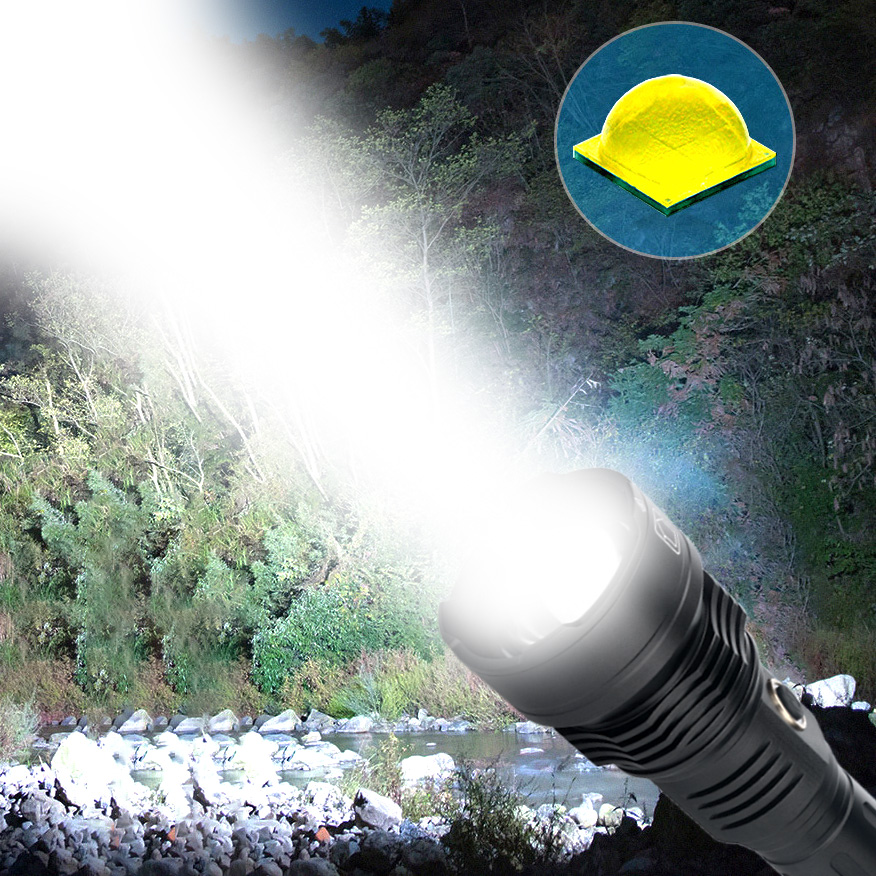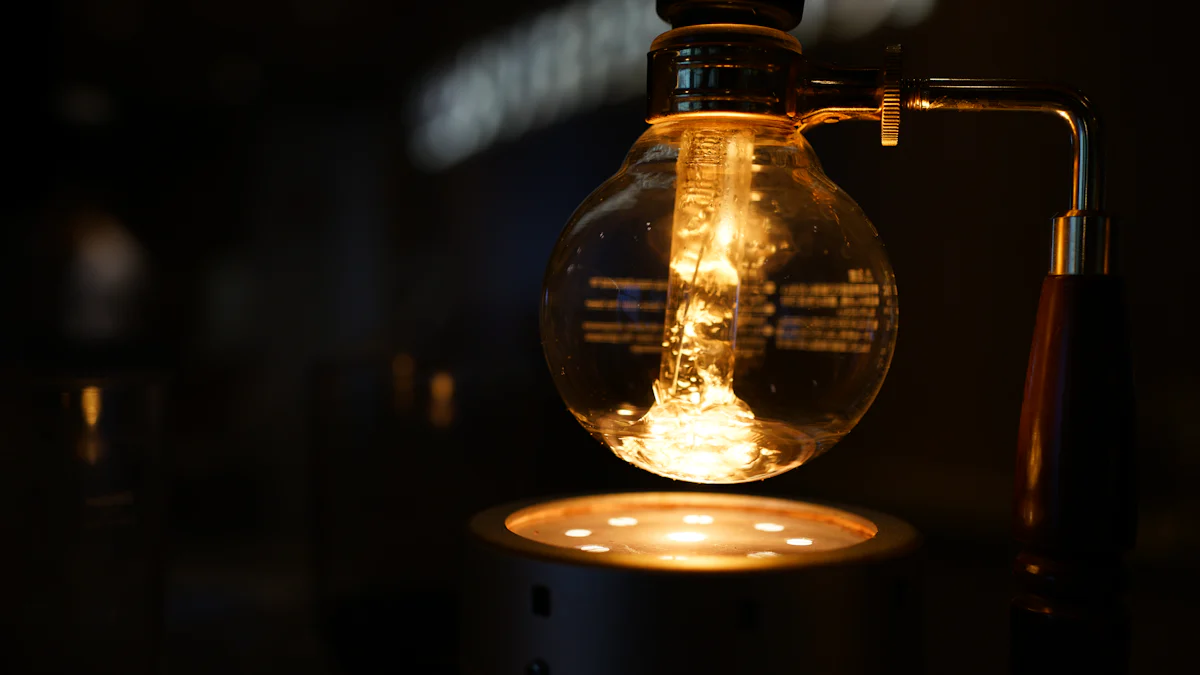The History of Flashlight Technology: From Incandescent to LED

The flashlight has revolutionized the way we navigate darkness, and exploring flashlight history reveals its remarkable journey. Its invention in 1899 was a pivotal moment in portable lighting, made possible by earlier breakthroughs like the dry cell battery in 1866 and the incandescent bulb in 1879. Over the years, innovations such as plastic casings in the 1930s and rechargeable batteries in the late 20th century enhanced its design and functionality. Delving into flashlight history highlights how technological advancements have contributed to everyday convenience and safety.
Key Takeaways
Flashlights were first made in 1899, changing portable lighting forever.
LED flashlights use less energy and last longer than old ones.
Today’s flashlights have rechargeable batteries and smart designs for ease.
Special flashlights are tough and work well in harsh conditions.
Flashlights keep improving with solar power and wireless charging features.
The Origins of Flashlight Technology
The Birth of the Flashlight
The invention of the flashlight in 1899 marked a turning point in portable lighting. David Misell, an inventor in the United States, applied for a patent that year, making him a key figure in flashlight history. Around the same time, Paul Schmidt in Germany also contributed to the development of this groundbreaking device. However, the modern flashlight owes much to Conrad Hubert and Joshua Lionel Cowen. Hubert, a Russian immigrant, founded the American Electrical Novelty and Manufacturing Company, where Cowen created the first practical handheld electric flashlight.
The success of early flashlights relied on two critical innovations: dry cell batteries and carbon-filament bulbs. Dry cell batteries, introduced in 1887, were portable and safe, unlike earlier liquid-based batteries that could spill. These batteries provided the energy needed for handheld electric lights. Carbon-filament bulbs, though inefficient, produced the light. However, the combination of these technologies had limitations. Zinc–carbon batteries struggled to deliver a steady current, and carbon-filament bulbs consumed energy quickly. As a result, early flashlights could only operate in short bursts, which led to their name—flashlight.
Early Challenges in Flashlight Design
Early flashlight technology faced significant hurdles. Limited battery life was one of the biggest challenges. You could only use these devices for brief periods before the batteries needed rest. The dim light output of carbon-filament bulbs also made them less effective in complete darkness.
The design of early flashlights was another issue. These devices were fragile and prone to breaking. The materials used in their construction were not durable, and the technology was inefficient. For example, the bulbs generated more heat than light, wasting energy. Despite these challenges, the flashlight's potential as a portable lighting solution inspired further innovation.
Early flashlights may seem primitive by today’s standards, but they laid the foundation for the advanced flashlight technology you use today.
Advancements in Flashlight History: From Incandescent to Halogen

The Rise of Incandescent Flashlights
The early 1900s brought a significant leap in flashlight history with the introduction of tungsten filament bulbs. These bulbs replaced the less efficient carbon-filament versions, offering brighter light and longer-lasting performance. You could now rely on flashlights for more extended periods, making them practical for everyday use. Tungsten filaments also produced less heat, which improved energy efficiency and reduced the risk of overheating.
Battery technology also advanced during this time. Manufacturers developed batteries with better capacity and reliability, which allowed flashlights to operate for longer durations. This combination of improved bulbs and batteries made the handheld electric flashlight a more dependable tool. You might have noticed how these advancements laid the groundwork for the evolution of flashlight technology, making it more accessible and functional for users worldwide.
The Halogen Era
The 1960s introduced halogen bulbs to flashlight technology, marking another milestone in its evolution. Halogen flashlights became popular for their brighter and more focused beams. Professionals, such as law enforcement officers and emergency responders, often used these flashlights because of their durability and superior performance. You could see how these flashlights were designed to withstand demanding environments, making them ideal for specialized applications.
However, halogen flashlights had their drawbacks. They generated significant heat, which could make them uncomfortable to handle during prolonged use. Additionally, they consumed more energy, which meant frequent battery replacements or recharges. Despite these challenges, halogen flashlights represented a crucial step in the evolution of flashlight technology, bridging the gap between incandescent and modern LED designs.
The incandescent and halogen eras highlight how flashlight technology evolved to meet the growing demands of users. Each innovation brought you closer to the efficient and versatile flashlights you use today.
The LED Revolution in Flashlight Technology

The Emergence of LED Flashlights
How LED technology works and its advantages
The introduction of LED (Light Emitting Diode) bulbs transformed flashlight technology. Unlike traditional bulbs, LEDs convert most of their energy into light instead of heat, making them highly efficient. This innovation allows you to enjoy longer battery life and brighter illumination. LEDs also produce a focused beam of light, which improves visibility over long distances. Their solid-state design makes them durable and less likely to break, even if you drop your flashlight.
LED technology offers several advantages:
Superior brightness and clarity for navigating darkness.
A longer lifespan, reducing the need for frequent replacements.
Reliable performance for various activities, from camping to emergencies.
The first LED flashlights and their initial reception
The first LED flashlights appeared in the late 1990s. Initially, they were expensive and not as bright as modern models. However, their energy efficiency and durability quickly gained attention. Over time, advancements in LED technology improved their brightness and affordability, making them a popular choice for everyday use.
LED flashlights marked a turning point in the evolution of flashlight technology, offering a reliable and efficient alternative to older models.
Key Benefits of LED Flashlights
Energy efficiency and extended battery life
LED flashlights revolutionized energy efficiency. They use less power to produce the same amount of light as incandescent bulbs, which means you can rely on them for longer periods. This feature is especially valuable during emergencies when conserving battery life is crucial. Many LED flashlights also include dimming settings to extend battery life further.
Durability, brightness, and compact designs
LED flashlights are known for their durability. Unlike fragile filament bulbs, light-emitting diodes are solid-state, making them resistant to impact. They also produce a bright light without draining the battery quickly. The compact size of LED flashlights allows for innovative designs, making them easy to carry and store.
Feature | LED Flashlights | Earlier Models (Incandescent/Halogen) |
|---|---|---|
Durability | Solid-state, less likely to break | Fragile filaments |
Brightness | Incredibly bright, efficient power use | Less bright, drains battery quickly |
Design | Compact, innovative designs possible | Bulkier, limited design options |
Transformations in Flashlight Design
Miniaturization and lightweight models
The efficiency of LED technology has led to smaller, lighter flashlights. You can now find models that fit in your pocket without sacrificing performance. These miniaturized designs are perfect for everyday use, whether you need a flashlight for your car, home, or outdoor adventures.
Versatility for tactical, outdoor, and everyday use
Modern LED flashlights cater to a wide range of needs. Tactical flashlights offer features like strobe modes for self-defense. Outdoor enthusiasts benefit from waterproof and impact-resistant designs. Everyday users appreciate the convenience of rechargeable batteries and adjustable brightness settings.
The evolution of flashlight technology has made LED flashlights indispensable tools for various applications, combining efficiency, durability, and versatility.
Modern Innovations in Flashlight Technology
Smart Features in Flashlights
Rechargeable batteries and USB compatibility
Rechargeable batteries have transformed flashlight technology, offering a sustainable and cost-effective power source. You no longer need to rely on disposable batteries, which reduces waste and saves money. Many modern flashlights now feature USB compatibility, allowing you to recharge them conveniently using cables or docking stations. Some models even double as power banks, enabling you to charge other devices in emergencies.
Innovative features like fast recharge technology and wireless charging have further enhanced the functionality of rechargeable flashlights. For instance, models such as the NITECORE TM20K include wireless charging capabilities, making them even more user-friendly. These advancements ensure that your flashlight is always ready when you need it.
Adjustable brightness and programmable modes
Adjustable brightness settings and programmable modes make modern flashlights highly versatile. You can customize brightness levels, strobe patterns, and even SOS signals to suit different situations. This flexibility proves especially useful during outdoor activities, where quick adjustments can improve safety and convenience.
Some flashlights also integrate with smartphone apps, allowing you to program settings directly from your device. This feature enhances user-friendliness and ensures that your flashlight adapts to your specific needs.
Eco-Friendly Flashlight Designs
Solar-powered flashlights and sustainable materials
Eco-friendly flashlights prioritize sustainability by using materials like recycled plastics and bio-based polymers. These materials reduce waste and conserve resources, making them an environmentally responsible choice. Solar-powered flashlights take this a step further by harnessing renewable energy, eliminating the need for disposable batteries.
LED technology also contributes to eco-friendliness by consuming less energy and extending battery life. Rechargeable lithium-ion batteries further reduce waste, offering a long-lasting and sustainable power source.
Efforts to reduce environmental impact
Manufacturers are taking significant steps to minimize the environmental impact of flashlight production. Many models now incorporate recycled and biodegradable components, reducing waste and enhancing durability. Solar-powered and hand-crank flashlights eliminate the need for disposable batteries, while long-lasting LED technology reduces energy consumption. These efforts support a cleaner environment and promote the evolution of flashlight technology toward sustainability.
Specialty Flashlights for Unique Applications
Tactical flashlights for law enforcement and military
Tactical flashlights are designed for demanding environments. Constructed from military-grade materials like aircraft aluminum, these flashlights are shock-resistant and durable. They often feature high-intensity beams and strobe functions, making them ideal for law enforcement and military use. For example, the NightBuddy Military Grade Tactical Flashlight offers exceptional performance in extreme conditions.
Waterproof and explosion-proof designs for extreme environments
Specialty flashlights also cater to unique applications such as underwater exploration and hazardous environments. Dive lights provide high-lumen outputs and extended battery life, ensuring reliable performance underwater. Explosion-proof flashlights are designed to operate safely in flammable or explosive conditions, making them essential tools for industrial and emergency settings.
Modern innovations in flashlight technology have expanded their functionality, making them indispensable tools for various applications. From smart features to eco-friendly designs, these advancements reflect the ongoing evolution of flashlight technology.
The evolution of flashlight technology showcases remarkable progress, from the dim glow of carbon-filament bulbs to the brilliance of LED designs. LEDs have revolutionized flashlights by offering energy efficiency, durability, and compactness. Modern features like rechargeable batteries, strobe modes, and waterproof designs make them indispensable tools for diverse needs. Looking ahead, advancements such as wireless charging, smart connectivity, and sustainable materials promise even greater innovation. These developments will continue to enhance flashlight performance, ensuring they remain essential for everyday and specialized applications.
FAQ
What makes LED flashlights better than older models?
LED flashlights are more energy-efficient and durable. They produce brighter light while using less power. Their solid-state design resists damage from drops or impacts. You can also find compact and lightweight models, making them convenient for everyday use.
How do rechargeable flashlights work?
Rechargeable flashlights use lithium-ion or similar batteries. You can recharge them through USB ports, docking stations, or solar panels. This eliminates the need for disposable batteries, saving you money and reducing waste. Many models also offer fast charging for added convenience.
Are solar-powered flashlights reliable?
Yes, solar-powered flashlights are reliable when exposed to sufficient sunlight. They store energy in built-in batteries, allowing you to use them even at night. These flashlights are eco-friendly and ideal for outdoor activities or emergencies where traditional power sources are unavailable.
What is a tactical flashlight?
A tactical flashlight is a high-performance tool designed for law enforcement, military, or self-defense. It features a durable build, intense brightness, and strobe modes. You can use it in extreme conditions, making it suitable for demanding environments or emergencies.
Can flashlights be used underwater?
Yes, waterproof flashlights are designed for underwater use. They feature sealed casings that prevent water from entering. Divers often use these flashlights for exploring underwater environments. Always check the depth rating to ensure the flashlight meets your specific needs.
See Also
Tracing Flashlight Development From Ancient Times to Today
Choosing Between Lanterns and Flashlights for Camping Trips
A Complete Guide to Understanding Flashlight Lumens
Exploring Various Types of Flashlights Available Today
Explaining Stepless Dimming Technology in Modern Flashlights
